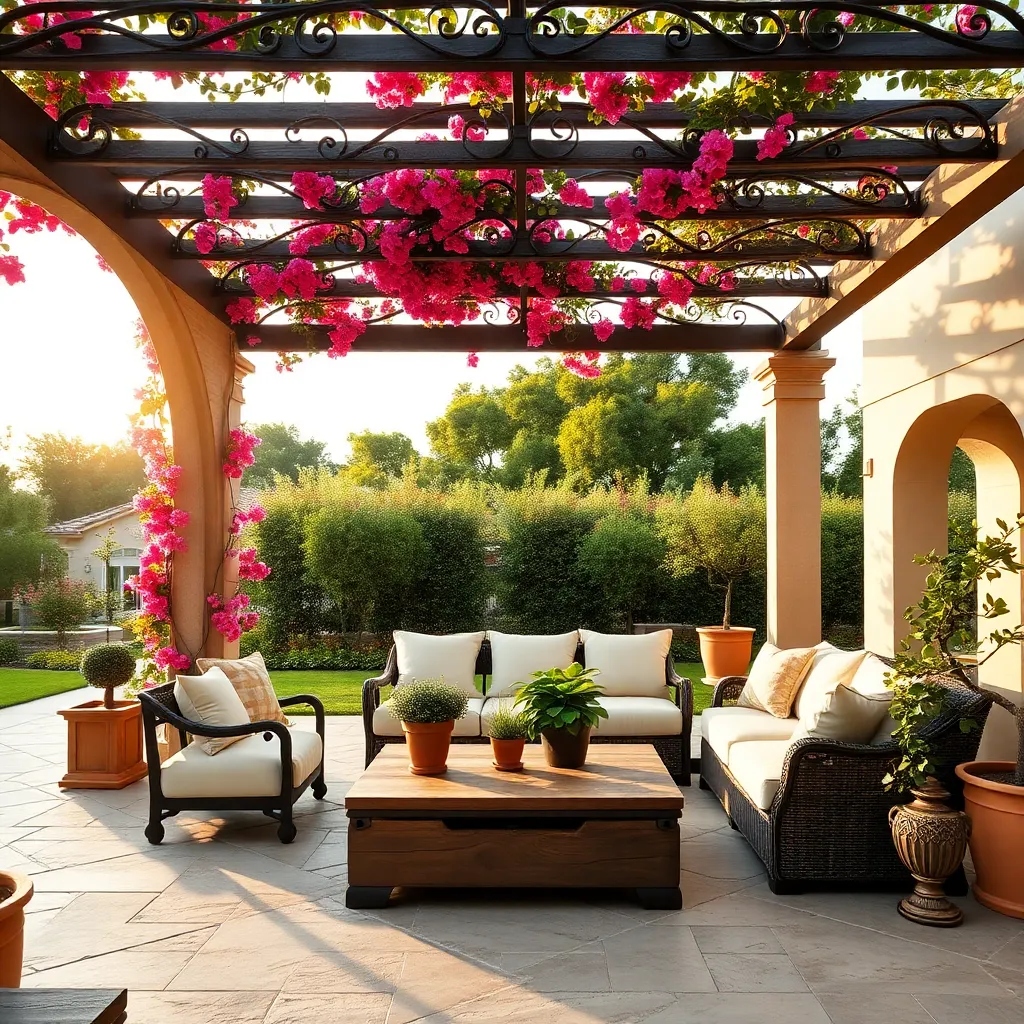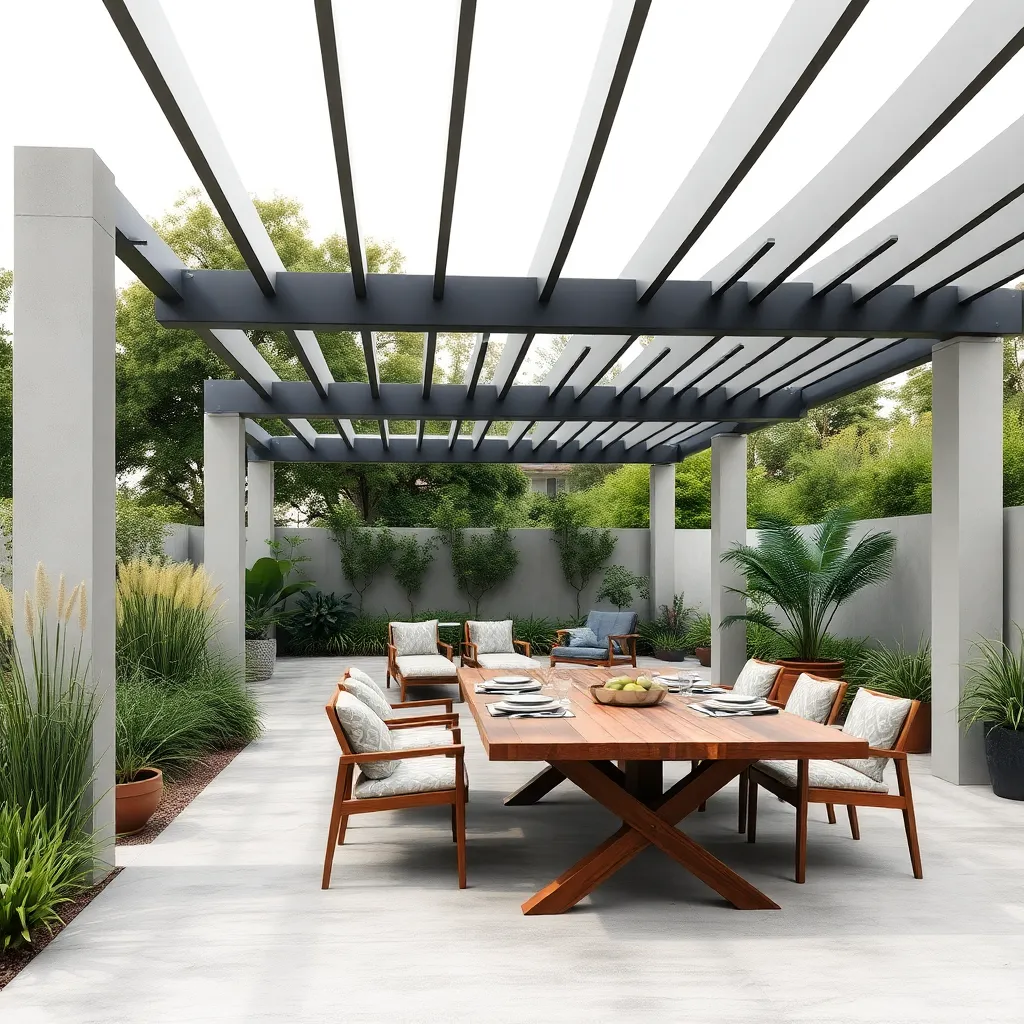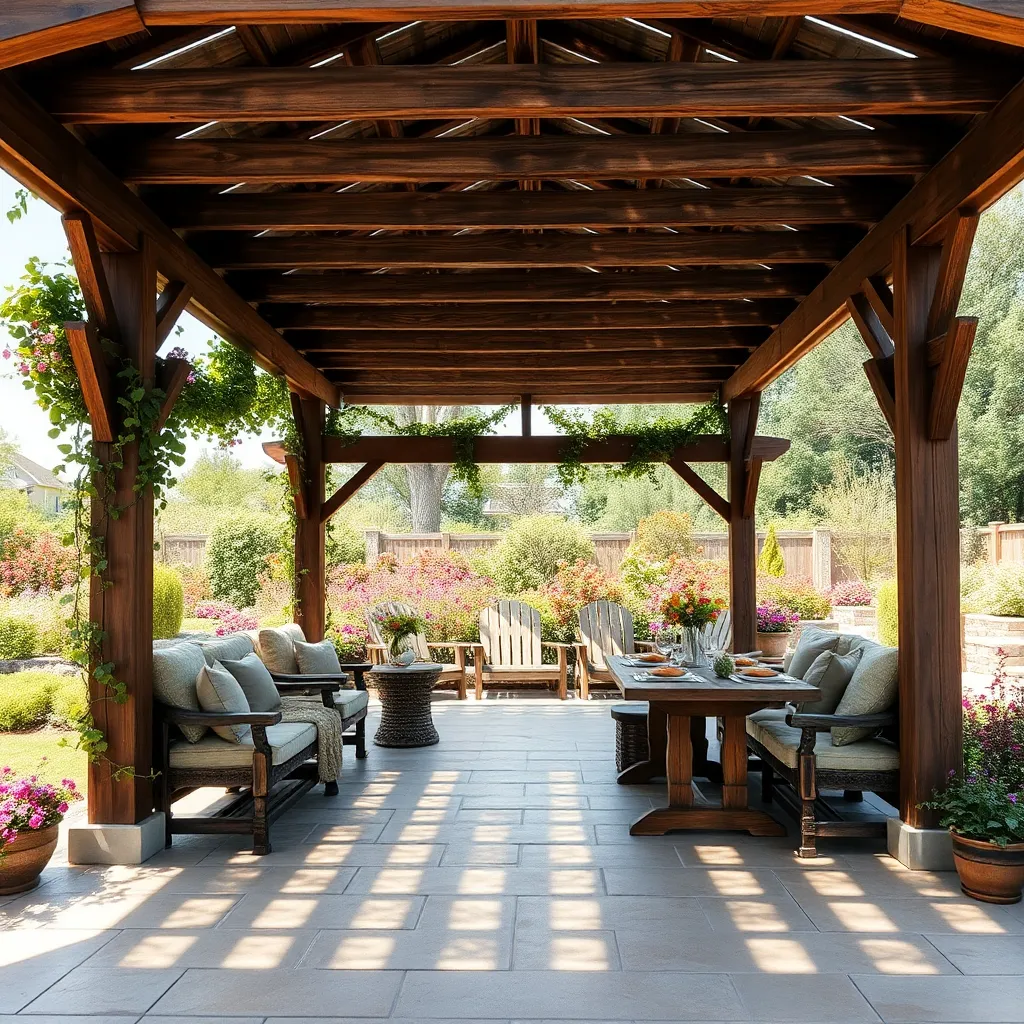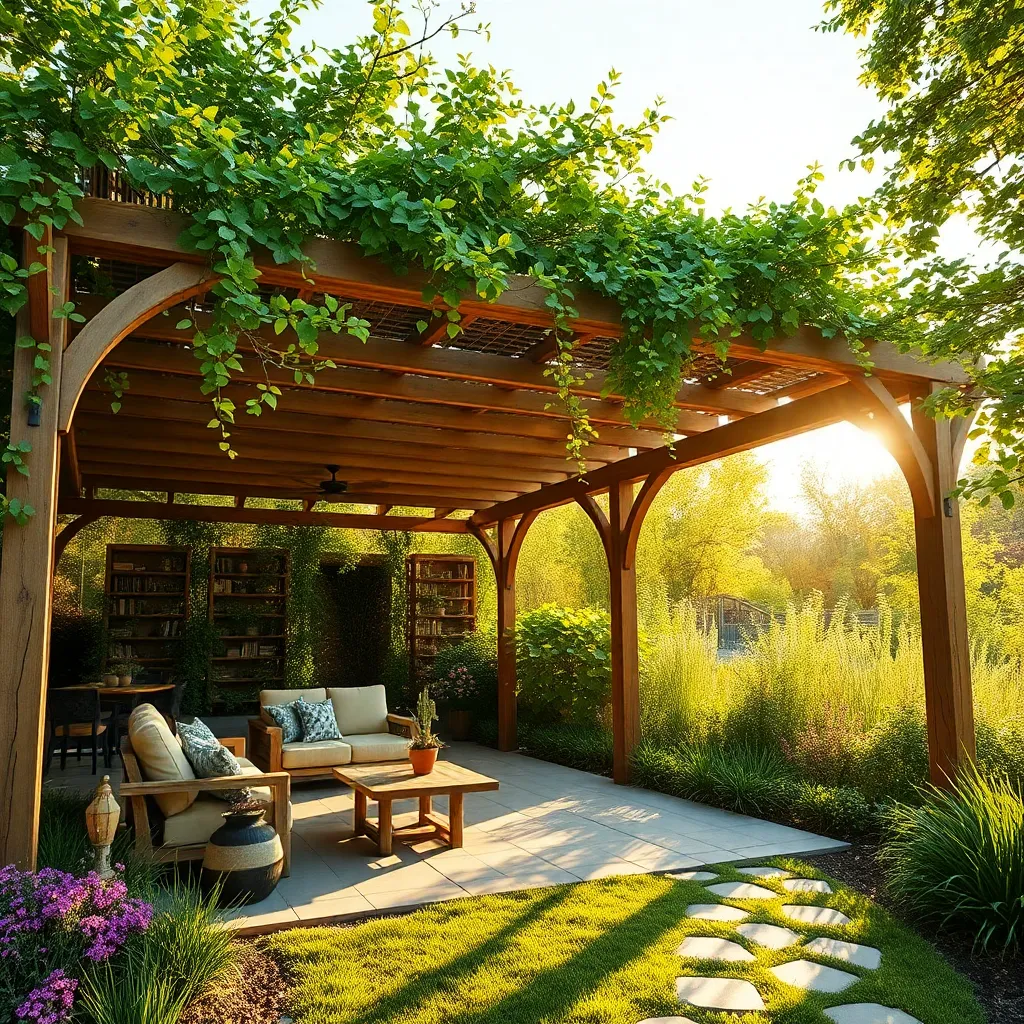Imagine stepping into your garden and feeling as if you’ve entered a tranquil paradise, where the design and elegance of a pergola set the stage for relaxation and entertainment. Whether you’re a novice ready to embark on your first outdoor project or a seasoned homeowner looking to refine your space, this guide to the best pergola designs for large gardens is your ticket to creating a stunning outdoor sanctuary.
In exploring these remarkable designs, you’ll uncover the perfect blend of aesthetic beauty and practical functionality. From enhancing your garden’s visual appeal to providing a versatile space for gatherings, the right pergola can transform your outdoor area into a cherished extension of your home. Let us guide you on this exciting journey to elevate your garden with confidence and joy.
Mediterranean Elegance Pergola (Wrought Iron Details)

Incorporating a Mediterranean Elegance Pergola with wrought iron details can transform your large garden into a sophisticated retreat. Start by selecting durable materials like cedar wood for the pergola frame, complemented by intricately designed wrought iron elements. Opt for ironwork with floral or geometric patterns to enhance the Mediterranean aesthetic. Beginners should focus on simple designs, while those with advanced skills can experiment with custom ironwork or integrating climbing plants like bougainvillea for added charm.
Position your pergola in a spot that captures both sunlight and shade, creating a versatile outdoor living space. For a balanced look, ensure your pergola dimensions are proportional to your garden size—typically, a 12×12 feet structure works well. Consider adding retractable canopies or curtains to provide flexible coverage against the elements. Experienced DIYers can explore adding built-in seating with matching wrought iron accents, making the space both functional and inviting.
Modern Minimalist Pergola (Aluminum Slats)

For a sleek and contemporary addition to your garden, consider a modern minimalist pergola made from aluminum slats. This design offers a clean, streamlined look that complements any large outdoor space. Aluminum is a fantastic material choice due to its durability and resistance to weather, ensuring your pergola looks great for years with minimal maintenance. Beginners can start by selecting a basic rectangular shape, while more advanced DIYers might explore custom angles or curves to create visual interest.
When constructing a modern minimalist pergola, focus on simplicity and functionality. Opt for slats with a powder-coated finish to enhance weather resistance and choose a neutral color palette, such as whites, grays, or blacks, to maintain the minimalist aesthetic. Ensure the slats are spaced evenly, typically about 1-2 inches apart, to provide a balanced mix of shade and sunlight. A professional tip for advanced builders: incorporate adjustable slats to control sunlight throughout the day, offering both comfort and versatility. This design is ideal for those who appreciate understated elegance and practical functionality in their outdoor spaces.
Rustic Farmhouse Pergola (Reclaimed Wood)

For a touch of rustic charm, consider building a pergola using reclaimed wood. This sustainable choice not only adds character but also reduces environmental impact. To construct a sturdy pergola, choose reclaimed wood beams that are at least 4×4 inches for posts and 2×6 inches for crossbeams, ensuring longevity and strength. Beginners should start with a simple rectangular design, while those with more experience can experiment with arched tops or decorative cutouts to enhance visual appeal.
When assembling your rustic farmhouse pergola, make sure to use galvanized hardware to prevent rust and extend the life of the structure. For added stability, anchor the posts in concrete footings, which should be at least 18 inches deep. Incorporate climbing plants, like wisteria or grapevines, to create natural shade and a lush, inviting atmosphere. For extra flair, consider adding vintage lanterns or fairy lights to highlight the reclaimed wood’s unique texture and create a cozy evening ambiance.
Eco-Friendly Green Pergola (Living Plant Canopy)

For a truly eco-friendly garden escape, consider creating a living plant canopy with a green pergola. This design involves growing climbing plants over a sturdy pergola structure, providing natural shade and enhancing the garden’s aesthetic. Use materials like untreated wood or metal for the pergola frame to ensure durability. Choose fast-growing climbers, such as wisteria, clematis, or grapevines, to establish a lush canopy quickly. Install wire or lattice panels on the pergola to guide plant growth and create a dense, leafy cover.
Remember, the success of your living canopy depends on the careful selection of plants and regular maintenance. Begin by planting your climbers in nutrient-rich soil at the base of the pergola posts. Water them consistently, particularly during dry spells, to promote healthy growth. For an advanced touch, integrate a drip irrigation system to ensure efficient water use. Regular pruning will help maintain the desired shape and prevent overgrowth. This sustainable approach not only beautifies your garden but also supports local biodiversity and reduces your carbon footprint.
Japanese Zen Pergola (Bamboo and Stone Accents)

Creating a Japanese Zen pergola can transform your garden into a serene retreat. Start by using bamboo as the main structural element; its natural strength and aesthetic appeal make it ideal for supporting the pergola. Ensure the bamboo poles are at least 3 inches in diameter for optimal stability. Incorporate stone accents to ground the design, using river stones or gravel for the base to enhance the Zen ambiance. For beginners, a simple rectangular layout works best, while advanced gardeners may prefer incorporating curves or multiple tiers for added complexity.
Integrating a few design elements can elevate your Zen pergola from simple to stunning. Consider adding a lattice roof with bamboo slats to filter sunlight, creating soothing patterns of light and shadow. Enhance the space with traditional Japanese elements like a stone lantern or a small water feature to boost tranquility. When selecting plants, opt for species like Japanese maples or bamboo grasses that complement the theme and thrive in partial shade. Regular maintenance, such as treating bamboo with a sealant, will preserve its natural beauty and ensure longevity.
Conclusion: Creating Beautiful Outdoor Spaces
In exploring the ‘Best Pergola Designs for Large Gardens,’ we’ve uncovered five key relationship concepts that transcend outdoor aesthetics to nurture connections. First, embracing variety mirrors the diverse needs in relationships, with pergola designs ranging from classic to modern. Second, the importance of space and privacy in gardens reflects the need for personal boundaries and intimacy in relationships. Third, the role of natural elements—like climbing plants—emphasizes growth and nurturing. Fourth, the adaptability of pergolas for various activities highlights the importance of flexibility and shared experiences. Finally, the focus on communal spaces echoes the value of togetherness and communication.
As a next step, consider assessing your personal or shared space—be it physical or emotional—and identify areas where these concepts can enhance your relationships. Whether it’s planning a garden project or initiating a heartfelt conversation, small actions can make a big difference.
Remember to bookmark this article for future inspiration as you continue to foster relationships that bloom beautifully over time. By investing in these principles, you’re setting the foundation for lasting relationship success, filled with growth, adaptability, and joy. Let’s embark on this journey together and create spaces—both in our gardens and hearts—that are vibrant and flourishing.
